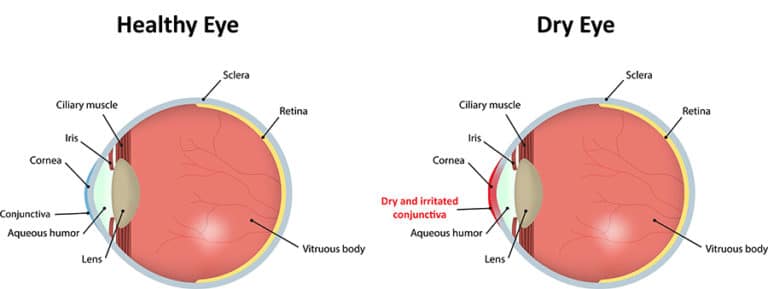What is Dry Eye

Dry Eyes are a long-term chronic disease that takes years to develop. It is a common and often chronic problem, particularly in older adults.
More than 100 million people suffer from Dry Eye. Your eyes are covered by a tear film that helps keep your vision clear and comfortable. People with dry eyes either do not produce enough tears or have poor quality tears. More than just water, tears are important to the health of your eye. Tears are a combination of water, fatty oils, electrolytes, proteins and substances that fight bacteria. When dry eyes do occur, it usually affects both eyes simultaneously.
When the protective layer is damaged in some way, the result is a destabilized tear film that results in dry eye syndrome.
There are two main forms of the disease: Evaporative and Aqueous Deficient.
Evaporative Dry Eye, which accounts for 86% of all dry eye cases, is caused by blockages in the Meibomian glands located in your eyelids.
The condition causing the obstructed glands is known as Meibomian Gland Dysfunction, commonly referred to as “MGD”. The Meibomian glands are responsible for creating the lipid (oil) layer of tears. This oil layer is a protective watery layer in the tear film. When the glands aren’t working as they should, you don’t produce enough tear film oil and your tears evaporate too quickly. An insufficient oil layer can cause your tears to evaporate 4x-16x faster than normal!

Aqueous Deficient Dry Eye occurs when the lacrimal glands do not create a sufficient amount of aqueous (water) to keep the eyes moist.
Symptoms
- Irritation
- Grittiness or scratchy eyes
- Foreign body sensation (“it feels like there is something in my eye”)
- Excessive watering or tearing
- Increased irritation in windy conditions
- Increased sensitivity to light
- Difficulty wearing contact lenses
- Blurred vision
- Vision Disturbance

